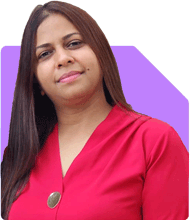I am 50 age and started a monthly sip of 35,000 the spread is 15% in index funds, 27% in equity caps, 15% in debt, 11% in metals, 10% in balanced/multi asset, 5% in retirement solutions, 4% in equity hybrid, balance in value/contra/elss funds.
Should I continue this distribution pattern considering my investment horizon is for 10 years from today, with aim to build a robust retirement growth portfolio
Ans: Here’s a detailed assessment to refine your portfolio based on your retirement goals and current strategy.
Portfolio Distribution Analysis
You've taken an active approach with a diverse allocation. However, a few adjustments could enhance alignment with your 10-year investment horizon. Here’s a breakdown of each segment in your portfolio to optimize for growth and risk management.
Reduce Exposure to Index Funds
Index Funds: With 15% allocation in index funds, there’s limited scope for outperformance. Index funds mirror the market, and they do not allow for active responses to market opportunities or corrections.
Consider Actively Managed Funds: Actively managed equity funds bring the expertise of fund managers who can pivot during volatility. This is essential for a growth-focused retirement portfolio that aims to beat market returns over the next decade. Moving part of this allocation to actively managed funds could enhance growth.
Equity Caps: Building a Strong Growth Foundation
Allocation of 27% in Equity Caps: This is a balanced amount, though increasing exposure to diversified equity funds could be beneficial. Large-cap, mid-cap, and small-cap allocations provide a strong mix of stability and growth potential. Over a decade, small- and mid-cap funds often outperform large caps, while the latter add stability during market lows.
Recommendation: Consider diversifying further within this category, with an eye on mid-cap and small-cap funds, alongside large-cap funds, for a well-rounded portfolio.
Debt Allocation: Enhancing Stability and Security
15% in Debt: This allocation adds stability and could help manage volatility. Debt instruments are essential, especially in the years closer to retirement when capital preservation becomes more critical.
Consider Ultra-Short Duration Debt Funds: As your horizon is 10 years, debt allocation can gradually be tilted toward ultra-short or short-duration debt funds. This could provide flexibility and liquidity, while protecting against sudden market downturns.
Metals: Assessing the 11% Allocation
High Metal Exposure: Precious metals like gold provide a hedge during economic downturns but are traditionally more conservative growth assets.
Optimal Allocation: For a retirement portfolio, reducing this exposure slightly (to around 5-7%) could allow for reallocating funds into higher-growth opportunities like diversified equity. Metals have lower returns compared to equity, and a more moderate allocation could still provide the needed hedge.
Balanced/Multi-Asset Funds: Moderate Growth Potential
10% in Balanced/Multi-Asset Funds: This is beneficial for conservative growth and risk management. Multi-asset funds allow diversification across asset classes, reducing risk during economic downturns.
Suggestion: This allocation can remain stable, as it adds balance without reducing growth potential. However, ensure these funds have a strong equity component to align with your growth objectives.
Retirement Solutions Funds: Reassessing Role and Contribution
5% in Retirement Solutions Funds: These funds often come with lower growth potential and may not align with your goal of maximizing returns over 10 years. Many retirement-focused funds are conservative in nature, designed more for gradual growth and capital preservation.
Alternative: Redirect part of this allocation into actively managed equity funds with a longer time horizon, for optimized growth until retirement.
Equity Hybrid Funds: Strategic Growth and Balance
4% in Equity Hybrid Funds: This allocation is quite conservative. Hybrid funds, while offering both equity and debt exposure, may not fully capitalize on growth potential given your horizon and goals.
Recommendation: Consider redirecting part of this allocation toward more growth-oriented funds like diversified equity funds. With 10 years left, a stronger focus on equity can accelerate growth.
Value, Contra, and ELSS Funds: Long-Term Growth with Tax Benefits
Remaining Allocation in Value/Contra/ELSS Funds: This is a wise addition. Value and contra funds capitalize on underperforming sectors that can grow significantly over time, while ELSS provides tax benefits under section 80C.
Optimization: Continue this allocation but consider rebalancing into more growth-centric options as the market evolves. ELSS funds offer a growth advantage with tax-saving benefits and should remain a part of your plan.
Additional Recommendations for a Robust Retirement Portfolio
Review Direct vs. Regular Fund Investments:
Direct funds may seem cost-effective but lack guidance. Investing with the help of a Certified Financial Planner (CFP) through regular funds offers valuable insights and strategic portfolio management. CFPs help in managing market changes, ensuring alignment with your goals.
Long-Term Capital Gains (LTCG) Taxation:
Equity Funds: Gains above Rs. 1.25 lakh are taxed at 12.5%, while short-term capital gains attract 20%.
Debt Funds: Gains, whether short- or long-term, fall under your income tax slab. This is a factor to consider, especially closer to retirement, when withdrawals may incur taxes. Planning your withdrawals to minimize tax impact is key.
Gradual Shift Toward Debt Allocation Nearing Retirement:
As you approach retirement, gradually shifting more funds to debt or balanced funds is wise for capital preservation. Over time, this will help secure gains and minimize the impact of any sudden equity market downturns.
Rebalance Annually for Alignment with Goals:
An annual review helps adjust your portfolio’s risk level and re-aligns your allocations as you progress toward retirement. This keeps the portfolio healthy and adaptable to market changes.
Emergency and Health Fund Provision:
Ensure you have adequate health insurance and a small emergency fund outside of your SIP investments. This adds a buffer, allowing your retirement portfolio to remain undisturbed.
Final Insights
Your approach is thoughtful and diversified, yet some adjustments could enhance your retirement plan's growth and stability. By fine-tuning allocations in equity, minimizing metals, and seeking higher-growth funds, you can build a more robust retirement corpus.
Best Regards,
K. Ramalingam, MBA, CFP,
Chief Financial Planner,
www.holisticinvestment.in
https://www.youtube.com/@HolisticInvestment




















.jpg)




